If a Constraint Has Been Broken, Go Back to Step 1
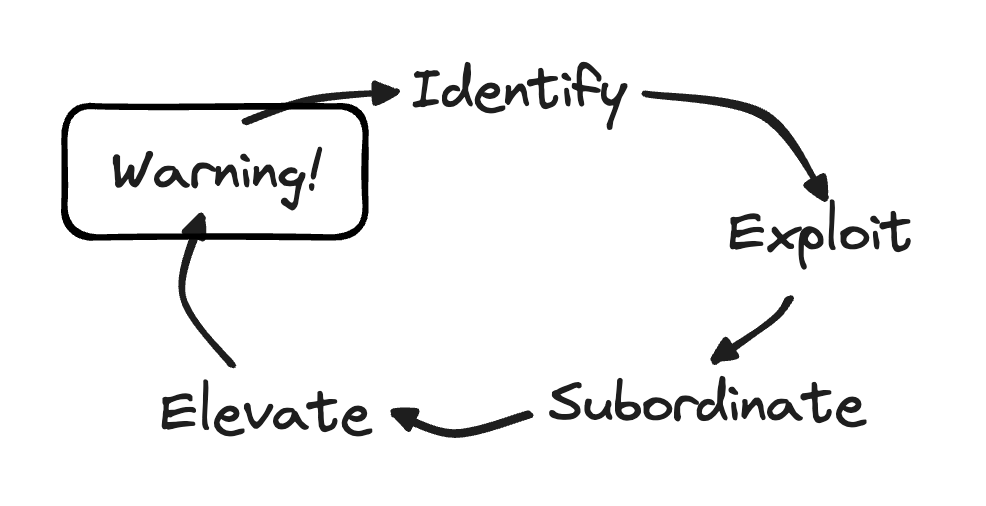
Do Not Allow Inertia to Cause a System's Constraint
Since we successfully Elevated the System's Constraint in the previous step, the Constraint now has moved. However, before we return to the first step, a warning!
Take notice and recall all the actions we took and policies we put in place when we Subordinated Everything Else to the Constraint. Now that the Constraint moved, you must re-evaluate all those policies and ensure that they are still relevant. If you do not, you may find yourself constrained by outdated policies and procedures, and not by an actual Constraint.
Need help? Schedule a free 30min session
If at any point you feel like the guide is unclear or otherwise unable to help you, schedule a 30 minute session to get help. Your experience and feedback will help improve this guide for you and others.
Inertia
Some of the outdated policies and procedures are easily visible on a Wardley Map. Consider the Tea Shop example where we elevated the Component Constraint.
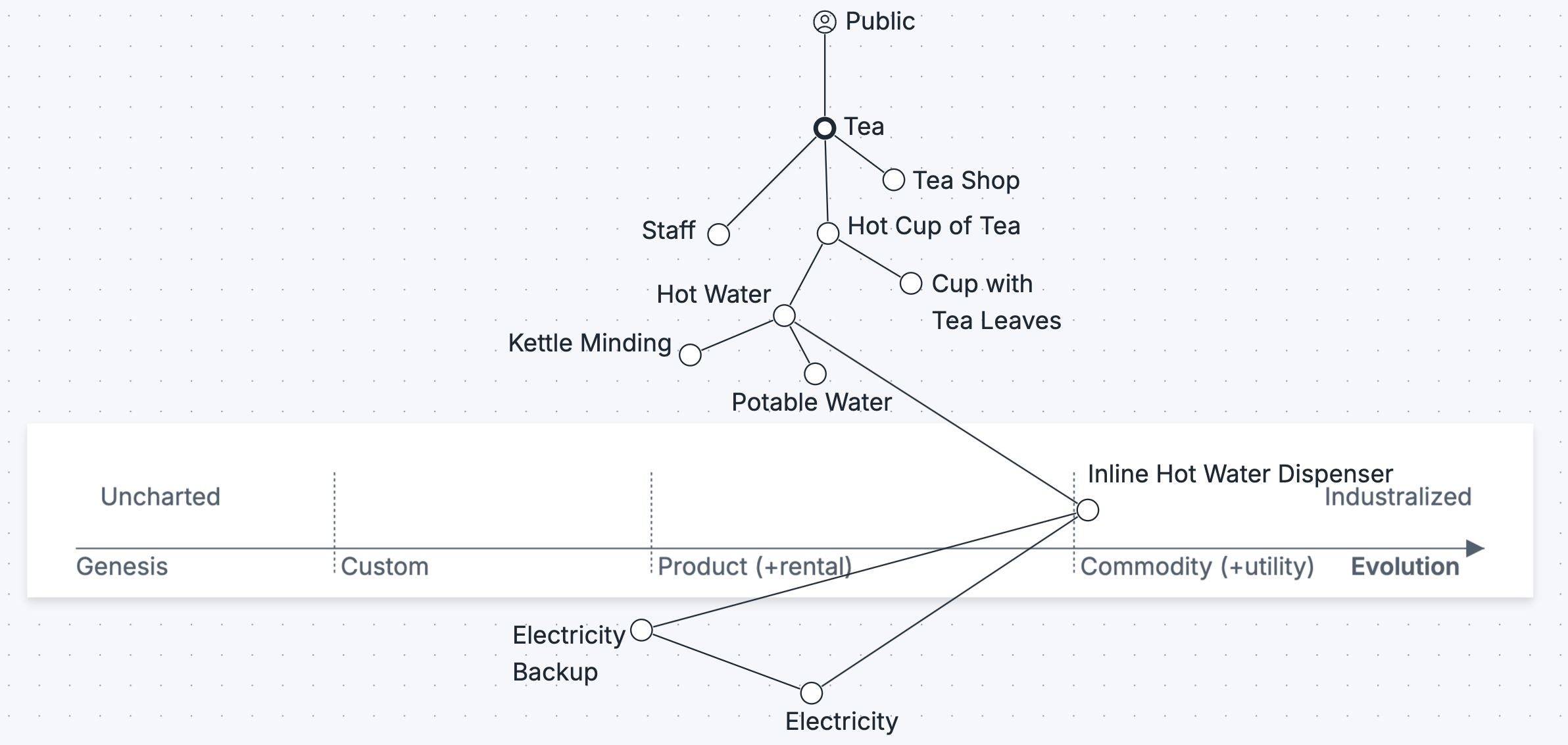
We notice on the Wardley Map that we have the practice of Kettle Minding in place, but no more Kettle to mind. Associated with the Kettle Minding, we had the following policies in place that are no longer applicable with Inline Hot Water Dispenser available:
- ensure that we have enough Potable Water available for warming by the Kettle whenever Kettle becomes available
- use Kettle when Tea Shop is closed to create Potable Water reservoir for next day
- working backwards, if Hot Water is to be available right when Tea Shop opens, then Potable Water must be available for the Kettle before opening for as long as it takes to heat the water
- train the Kettle Minding staff so that they
- are always available to empty and refill the Kettle when a batch of water heating completes.
- immediately escalate any shortage of outputs like Cup with Tea Leaves
- train the Kettle Minding staff to start water heating sufficiently prior to Tea Shop opening
- we need to ensure that there are always open Cups with Tea Leaves available to accept Hot Water from the Kettle
Since we removed Kettle as our Constraint, we must also re-evaluate all of the above policies and training materials. In fact, we have to retrain the Staff to no longer follow what they previously learned. If we don't, two years from now our Staff will wonder why we always prepare Cups with Tea Leaves before the store opens, and the answer will be "because we've always done it that way."
In our example, we are vigilant, and with the Constraint now elsewhere, we update everything and get rid of Kettle Minding practice.
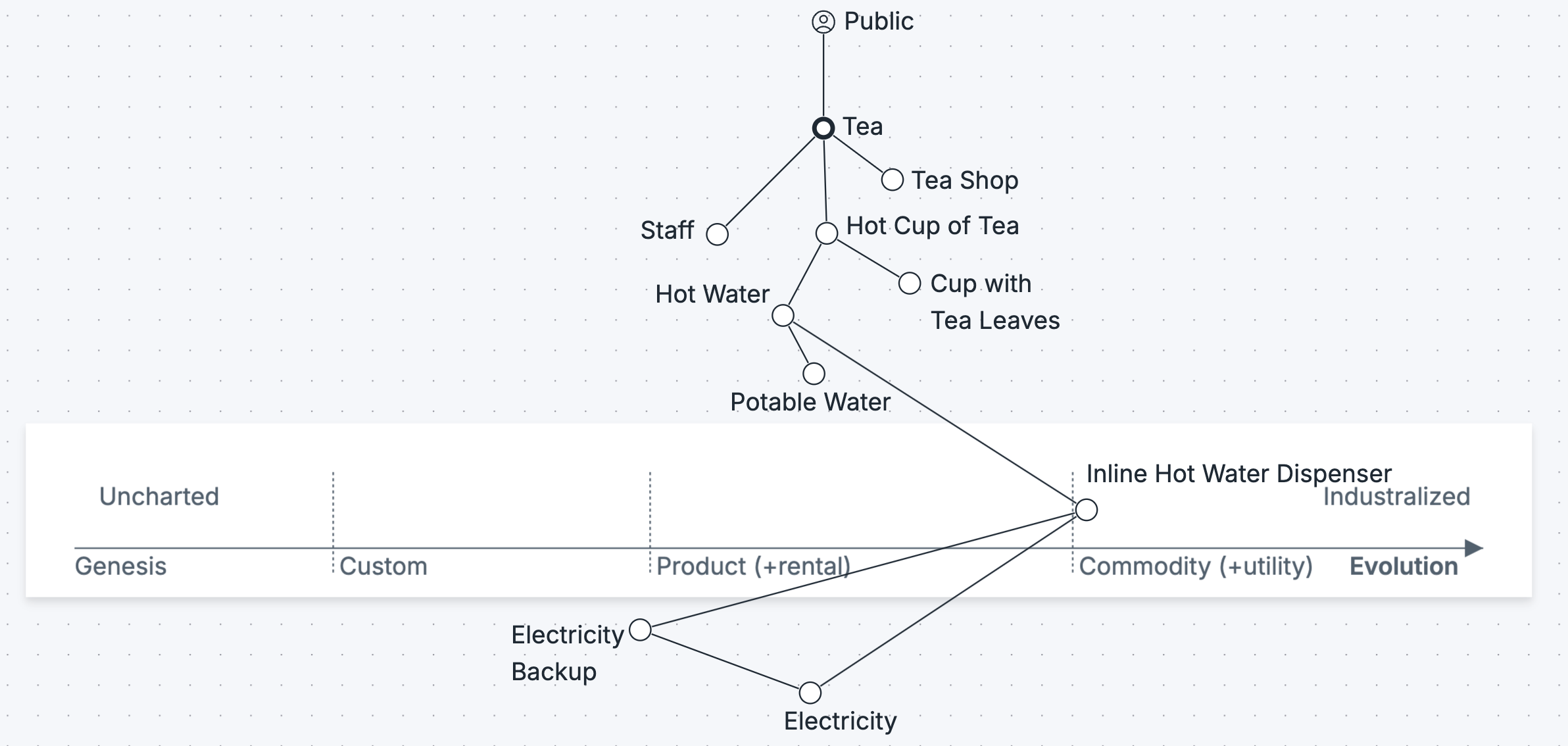
Iterate
As you return to Identify the System Constraint step, you no longer need to start from scratch.
Where initially you started with the simplest possible Value Chain, you now have a more detailed view of your system. As you work to identify your next Constraint, more of your Value Chain will end up as a Wardley Map (with an evolution axis). The more of your Value Chain ends up as a Wardley Map, the easier to apply more of the patterns and heurstics from Wardley Mapping.
You are now ready to, once again, Identify the System Constraint.
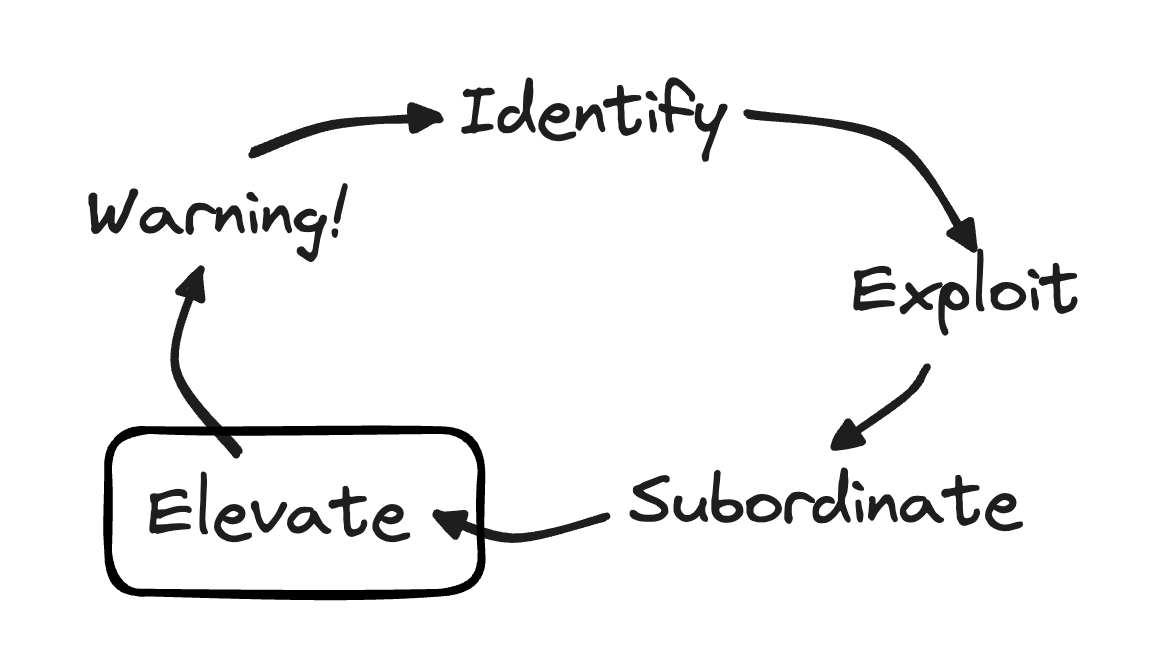
Go back
Elevate the System's Constraint
Explore the process of elevating the system's constraint by stepping out of the process flow and considering evolutionary stages. Learn how to identify, exploit, and elevate constraints within your system.
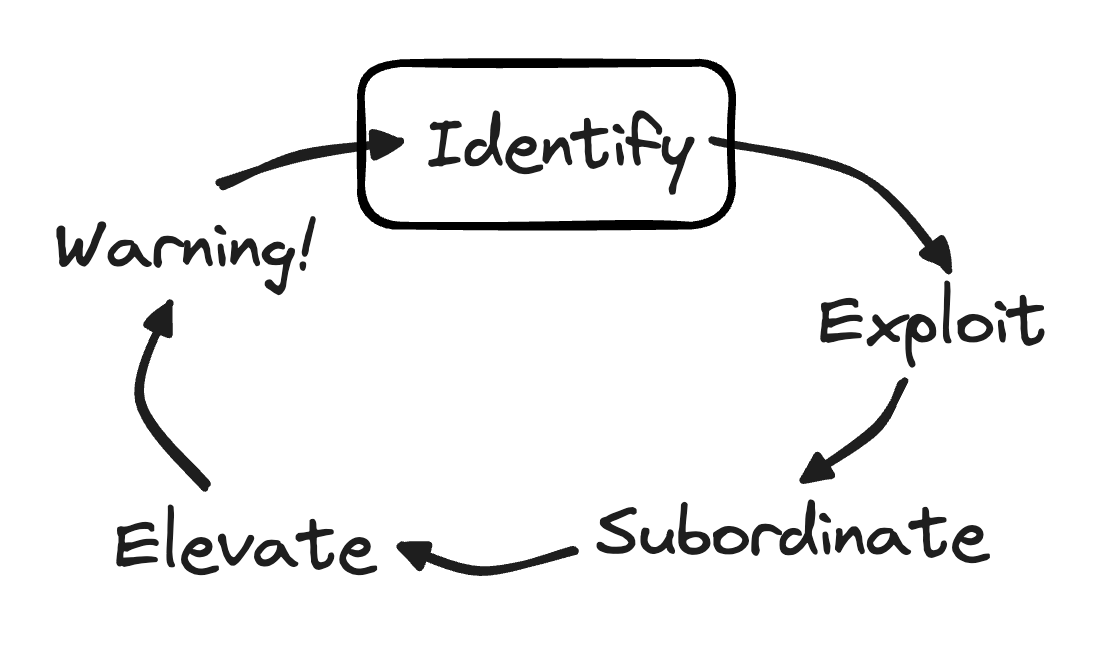
Up next
Identify the System Constraint
Learn how to identify and add detail to the system Constraint in your Value Chain. Follow a step-by-step process to pinpoint a clear and actionable Constraint, using the Tea Shop example as a reference.
